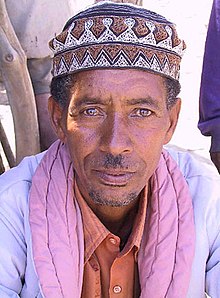"For the early Bushmen, as for their modern descendants, the most attractive parts of East Africa were not those well-watered districts where the modern population is densest, but the dry grasslands of central Kenya and Tanzania. It was here that the game animals which provided much of the food of these hunting peoples were most abundant. This broad wedge of highland steppe that stretches deep into East Africa continues northward along the Rift Valley through Ethiopia to the Red Sea. Southward along this "ecological bridge" that connects East Africa with regions to the north there appear to have come, beginning perhaps about ten thousand years ago, a stream of people of Caucasoid stock whom some archeologists describe as "proto-Hamites." This movement of Caucasoid peoples from Northeast Africa has continued until modern times, its latest phase being the migration of Somali pastoralists into northern Kenya in the early years of the present century. The earliest Caucasoid immigrants settled beside the lakes in the Kenya Rift Valley. They possessed finer stone implements than any previously known in East Africa. Fishing supplied them with much of their food, and they were able, like the mesolithic Negroids of Khartoum, to live a settled life with leisure to produce other artifacts, such as pottery. Many centuries later other Caucasoid groups, arriving in East Africa about 1000 B.C., introduced domestic cattle and possibly also cereal cultivation. By the first millennium ad, these "ancient Azanians," as some historians have termed them (Azania was the name given by Greek writers to the coast of East Africa), had come to populate most of the Kenya highlands and adjoining areas in northern Tanzania. They have left many traces of their occupation: stone burial chambers, hut circles, terraced fields, even the traces of roads and irrigation works. They are recalled in the earliest tradition of the present inhabitants as a race of tall, bearded, red-skinned people. And they have their living descendants in the Iraqw of northern Tanzania, whose language has been identified as Cushitic. But it was the lot of the great majority of these Caucasoid Azanians to succumb to the pressure and to be absorbed in the mass of later waves of immigrants, the Nilo-Hamites and the Bantu."
Original Tanzanians:


Modern Tanzanians:

One minute silence for our fallen Southern Cushitic brethren.
Original Tanzanians:


Modern Tanzanians:

One minute silence for our fallen Southern Cushitic brethren.






 and Bosaso has Oromo problem . You guys will get pushed out to sea too
and Bosaso has Oromo problem . You guys will get pushed out to sea too
